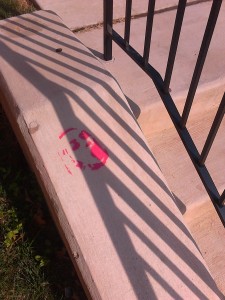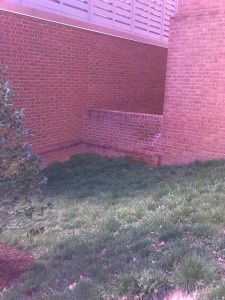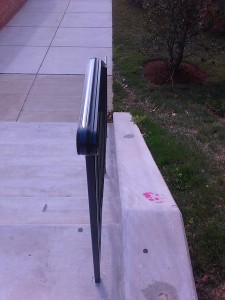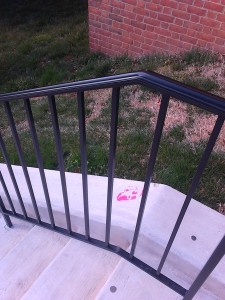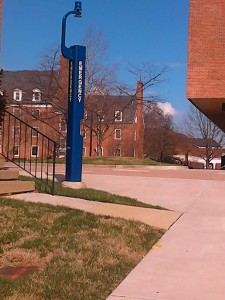Sorry, couldn’t help myself. But I think there’s something appropriate about the Transformers reference when it comes to #transformDH, a nascent movement that challenges the boundaries of digital humanities work and opens a space (indeed, many interstitial and tactical spaces) for transformative critique, as Alexis Lothian and Amanda Phillips termed it in their recent essay “Can Digital Humanities Mean Transformative Critique?” For me, it is useful to think about the #transformDH crowd as Transformers in the pop cultural sense (and I’ve started referring to them as such on twitter) because they are constantly reworking, recombining, reconfiguring, and recontextualizing the technologies and concerns with which digital humanities are typically preoccupied. #transformers call attention to blind spots in digital humanities, and they spring into action to show that technologies always exceed the uses and audiences to which their creators imagine they can be put. #transformers are not just performing (or deforming) critique, but they’re also engaged in creative praxis that synthesizes and that offers something new.
Furthermore, the Transformers tagline “more than meets the eye” productively engages the contested issues of representation that many of our readings for today focused in on. For example, when Tara McPherson reports being asked “Why are the digital humanities so white?”, as her essay in Debates in the Digital Humanities is so provocatively titled, we need to ask ourselves what we are doing when we observe whiteness in one space or another. How does whiteness, and the power and privileges it accrues, organize and shape disciplinary spaces and imaginaries in ways that may be invisible to some but glaringly obvious to others? How is whiteness represented (or not), and how does it come to dominate our fields of vision without naming itself? What work does whiteness do, as a racial logic or a racial formation that whiteness studies understands to operate without or even beyond the actions of individual “white people”?
There is definitely “more than meets the eye” here, especially when whiteness goes unmarked. Thus we might putatively say “the digital humanities are so white” and in doing so mark and name whiteness, yet we would also be constructing a narrative that actively erases or ignores the vital presence, contributions, and ongoing interventions of scholars and thinkers of color, individuals who might also be queer, might also be women, might also be trans, might also be poor and working class, might also be alter- and disabled, might also be working in contexts that do not center the United States, might also not be doing their primary work within the multiply privileged site of the academy, might also…. In our discussion today, therefore, I want us to strategically and temporarily (re)center whiteness in order to be able to track where it goes and how it moves, yet I also want us to recognize and remember that the margins are very real, that they do not cease to exist because “we” [who is that, anyway?] cease to think about them, and that they are a precarious space where conversations are happening, work is being done, and lives are being lived. What do we want to do when we move what has and continues to be marginalized to the center? What is tactical about the space of the margin?
I have some questions to guide us and open up discussion.
Q: Where and how do we see #transformDH, in its various instantiations and iterations, engaging with, contesting, and (at risk of seeming redundant) transforming the topics that our course has taken as central to digital humanities, i.e., “big data” and the modeling and textual analysis of million+ books, archives and archiving, #studioDH or “building”, making, and playing?
Q: In addition to the racial, gender, sexual, class, and ability politics (among many others) that our readings for today urge us to attend to, many of these authors are also urging us to critically examine the shapes that our versions of interdisciplinary work take. How might digital humanities work already be aligned with existing interdisciplinary projects in women’s and gender studies, American studies, and queer studies? What are some concrete ways digital humanities work could productively engage the critical frameworks of critical race theory, critical whiteness studies, and disability studies? And by concrete, I mean how do you see your work in conversation with these modes of thought?
Q: Dovetailing off this question, I think it’s especially timely that as our semester draws to a close we have a conversation about our desire for digital humanities. I wrote about Robyn Wiegman’s new book Object Lessons in my first post and expanded on some of these thoughts on an under-construction collaborative venue that I’m a part of, Squeaky Wheel, which I very much consider to be a project of transformative critique. Wiegman asks us to interrogate our critical wishes–what do we desire to do with critique? What happens when critique does not fulfill all of our needs (professional, personal, political), when it fails, as it will, to do justice to and with our objects of study? We might ask the same thing of building, making, doing, coding, and MOOCing that we ask of critique. I want to ask, who is digital humanities doing justice to? Who is digital humanities doing just with? Why do we want digital humanities to be “a thing” and why do we get upset when digital humanities turns out to be many things? If digital humanities is supposed to be a public humanities project, who is “the public” and why do we assume we know what it is they want/need to know?
Some beginning thoughts.
A beginning roundup of #transformDH conversations, posts, and projects in this storify.




